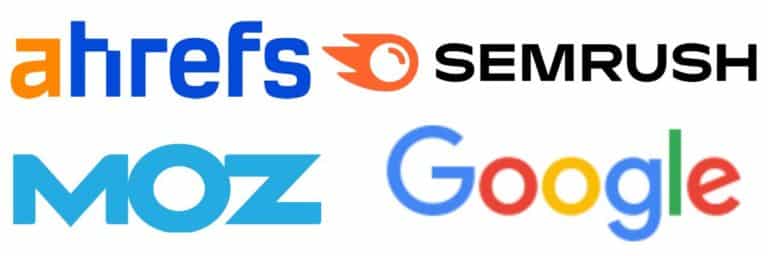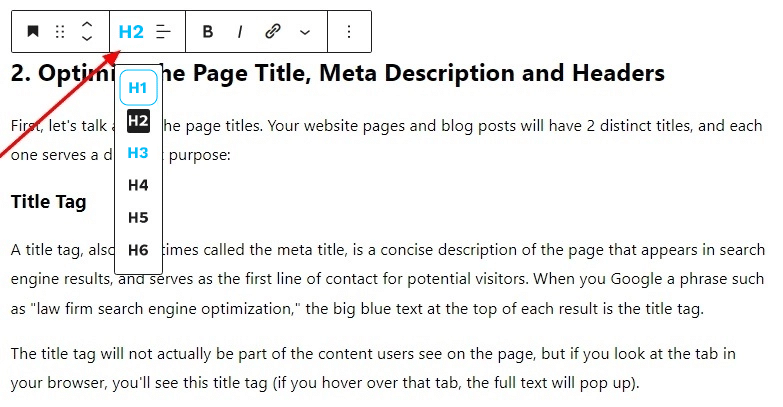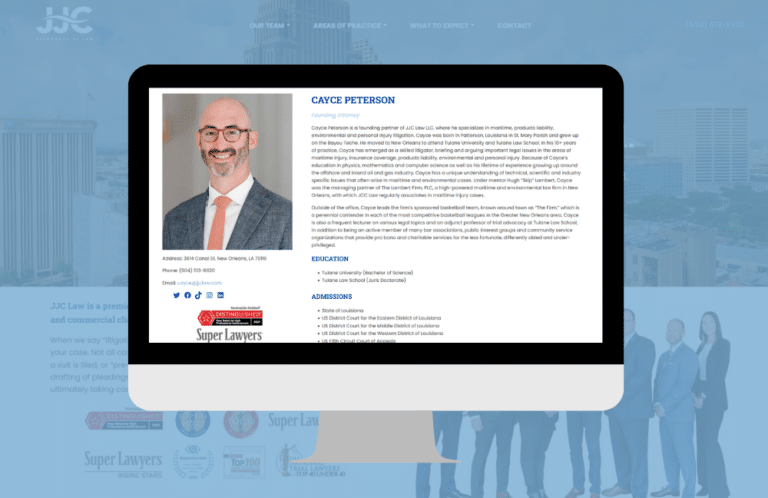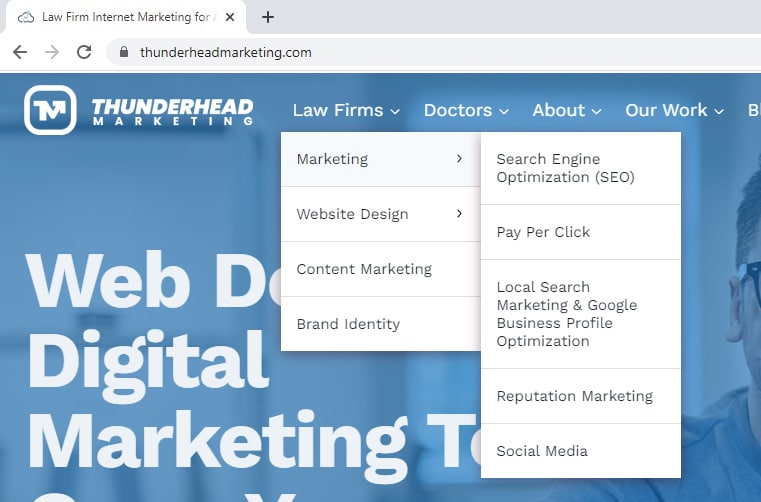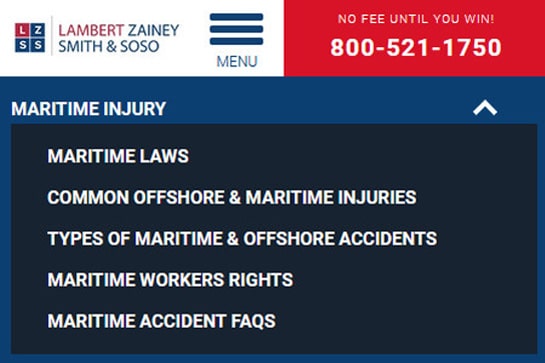“How do I get Google to start showing my page first for [insert your city/practice area] attorney?”
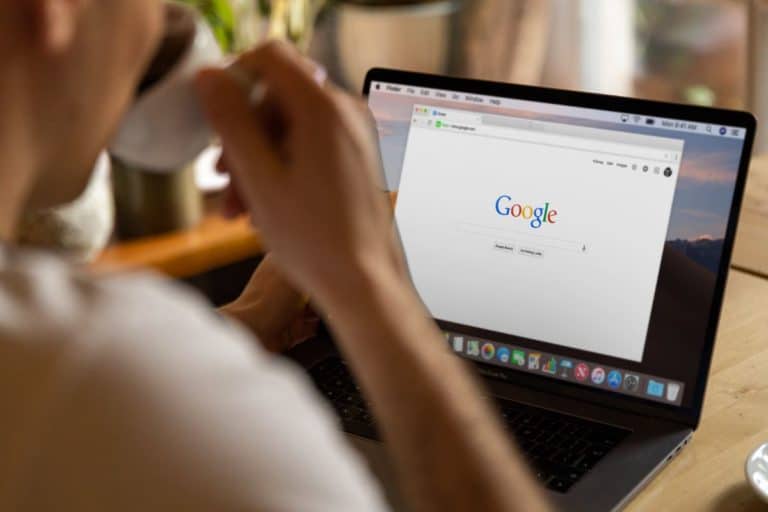
That’s the million-dollar question, isn’t it? Many factors go into getting Google to rank a particular page in the No. 1 spot for a given keyword, including specific signals from the page itself. Honing those on-page signals so that Google will see a page on your law firm website as the go-to resource is what we in the SEO business call “on-page optimization.”
So, what are these magical parts of a page that send signals to Google, and what do you need to do to them? Let’s explore.
1. On-Page Optimization Starts Off Page (Do Your Keyword Research)
Before you can start on-page optimization for your law firm website, you have to know the right phrase to optimize for. Keyword research is the foundation upon which all successful SEO campaigns for law firms will be founded. If your website ranks No. 1 for “Dallas oilfield accident lawyer” but your target audience is searching “drilling rig injury attorney Dallas” then the page ranking won’t matter because no one is going to see it.
Keyword research at the expert level is an art form — a delicate balancing act of using experience, instinct, and data to find the right combination of words. Here are the basics of what you need to know:
Brainstorm Keyword Ideas
Start with what you think people are Googling when they want to find an attorney in your practice area. Make a list of variations. Think of related phrases and the different ways you can classify what you do.
Use Keyword Research Tools to Gather Data
There are as many keyword research tools out there as there are search engine optimization experts. Start with the basics: Google’s Keyword Planner, Answer The Public, and keyword research tools in popular SEO suites like SEMRush, Moz and Ahrefs.
Analyze the Data and Choose Your Keywords
No matter which tool you choose, there are a couple key questions to ask:
- How many times are the phrases searched?
- How difficult will it be to rank for them?
Choosing the most searched term isn’t necessarily your best option. If you’re a brand new attorney taking DWI cases in Los Angeles, it’s really unlikely that your website is going to rank for “Los Angeles criminal defense lawyer” anytime soon. Look for the low-hanging fruit — phrases that get a decent amount of search volume but a low difficulty rating.
Try to have only one Primary Keyword and a few highly relevant Secondary Keywords you are optimizing for on a given page.
2. Optimize the Page Title, Meta Description and Headers
First, let’s talk about the page titles. Your website pages and blog posts will have 2 distinct titles, and each one serves a different purpose:
Title Tag
A title tag, also sometimes called the meta title, is a concise description of the page that appears in search engine results, and serves as the first line of contact for potential visitors. When you Google a phrase such as “law firm search engine optimization,” the big blue text at the top of each result is the title tag.
The title tag will not actually be part of the content users see on the page, but if you look at the tab in your browser, you’ll see this title tag (if you hover over that tab, the full text will pop up).
When you are optimizing a web page, you want to make sure the title tag includes the keyword for which you are trying to rank the page and as close to the front of the title as you can get it — without sounding robotic or spammy. It should also be short. Google generally only shows the first 50-60 characters of a title tag, so use them wisely.
And make it as interesting/informative as you can. You want your page titles to tell people what your page is about and WHY they should click on it.
H1 Tag
An h1 tag is a large headline at the top of the page that describes to users what information they are about to read. Like the title tag, you want to use the keyword for which you are trying to rank. The h1 can be the same as the title tag, but it doesn’t have to be.
Optimizing your h1 isn’t just about pleasing Google, it’s also about catching the reader’s interest and enticing them to read what you have to say. It’s important to write natural sounding headlines and sentences wherever possible. This will help avoid keyword stuffing. Which sounds more natural?:
- Learn How a Pasadena Accident Attorney Can Help You Win Your Case
- Learn How an Accident Attorney Pasadena TX Can Help You Win Your Case
Meta Descriptions
The meta description is another piece of “invisible” text that is in the code of your page and won’t be seen by users when they visit. However, if you Google a phrase, the meta description shows up in the search engine results as the block of text right below the title tag.
While the meta description isn’t considered a ranking factor for the Google algorithm, it still plays an important role and deserves to be included in our on-page optimization tips for law firm websites. This description should give the user a description of what is on the page, and you want it to stand out. Make this compelling enough to entice the user to click on your page. You have between 155-160 characters.
It should be noted that in some cases, Google may occasionally generate its own meta description from the text of your page if it feels it will be more relevant to a user’s search.
Page Headers
The page headers are the titles of the subsections of the page. They are also known as h1, h2, h3s, and so on. Headers are an important part of structuring the content on a website page. Optimizing headers involves using the correct hierarchy, adding relevant keywords, and making sure that everything is easy to read for both users and search engines.
There are six levels of headings you can use. The h1 as explained above is reserved for the main title of the page. H2s and h3s are used to describe subsections. Think of it like an outline — where you have a main topic (h1), and then sub-topics (h2) and then sub-topics of your sub-topics (h3 on down).
How many subsections you have will depend entirely on the subject and length of your content. If your page is 500 words long, you probably don’t need 6 subheads. For a longer page or blog post (like this one), you may have many more. Subheads help give structure and make it easier on Google to understand your content and for the reader to find what they are looking for.
If you’re using a CMS like WordPress, creating headers is as easy as clicking the correct button.
Proper header optimization can help improve your site’s visibility in search engine rankings, as well as make it easier for readers to find what they’re looking for quickly. We recommend keeping your headers short but descriptive, and including keywords (and variations of keywords) whenever possible.
3. Optimize Your URL
The URL of the page, also known as a page alias or slug, is what will show in the URL bar of the page when you are on it. You have control of what shows AFTER the forward slash trailing the domain name. URLs should be concise, descriptive, and informative. Avoid excessively long or complex URLs as they are difficult for both search engines and human visitors to understand. Use keyword-rich words in your URL that accurately reflect the content on the page.
Tips for optimizing URLs:
- Don’t be SPAMMY. You do not need to use your keyword more than once.
- Always use hyphens ( – ) instead of underscores ( _ ). Google recognizes the hyphen as a space. With underscores, Google sees that as run-on words.
4. Frequency of Targeted Keywords in the Page Content
This one is kind of a “duh” tip, but optimizing the text of your page is important to get right. Using your keyword too little makes it less effective, using it too much might make it look like SPAM to Google.
Best practices for keyword usage are ever-evolving, but in general we recommend using the targeted keyword in the text of the page about once for every 200 words of content. So for a 1,400 word page, you would try to use your keyword about 7 times.
Keyword stuffing used to be something that worked great back in the early days of the web. These days, it is considered a spammy technique and will earn you slap from Google. The key is to use keyword variations and make sure your content sounds natural when you read it. Which brings us to our next point.
5. Write for Potential Clients, Not for Google
Remember that you are writing for your prospective client, not the search engines. Use synonyms and related terms when possible. People tend to use the same keywords that often get searched just by naturally talking / writing about a topic. Over-optimized pages can look and sound like a robot spit it out. Over-optimizing a page can actually hurt your rankings since Google will likely penalize it, especially after the Google Spam Update.
We recommend that content should be at least 500 words long, but more robust content tends to do better and more of your competition will be creating pages that have closer to 800 to 1,000+ words. Now, that can be a lot to read, especially if it’s just big blocks of text. Bullet lists and sub-headings to allow users to quickly scan and hone-in on the information they are most interested in. Breaking up your content and giving it some structure with headings, sub-headings, and bullet points is a great way to work in secondary keywords or variations of your primary keyword phrase.
Organize your content with the most important information for the users near the top.
6. Add Optimized Images With Alt-Text
Ideally, each optimized page has at least one relevant image higher up on the page, usually above the content and below the page title. On-page optimization for images on a law firm website should include the following:
- Each image should have SEO-friendly alt tags. For example, let’s say a bio page for a Houston attorney who focuses on auto accidents has a picture of him or her near the top. The alt tag could be: <img src=”houston-auto-accident-attorney.jpg” alt=”Houston Auto Accident Attorney”>. Note that file names and alt-text do not have to match like they do in the above example.
- Choose the right format and file size for fast loading, especially for mobile devices.
- Customize file names to include the target keyword instead of using something like IMG_398756.
7. Optimizing Your Links
Last but certainly not least in our tips for on-page optimization of law firm websites is to be mindful of the links you are using and how you are using them. There are two types of links to discuss in this section: internal and external.
Internal / In-bound Links
Internal links are links that direct people from one page of your law firm’s website to another page on your website. This helps with navigation, as well as creating a hierarchy of importance for pages on your website. Internal links can help Google understand the context of each page, and how they relate to one another.
External / Out-bound Links
External links are links that direct people from your law firm’s website to another website. This could be a link to an authoritative source, such as linking out to a court ruling or government document. External links can help establish trust in the eyes of Google and show that you’re in touch with current events.
For both internal and external links, the optimization comes in with the anchor text. Anchor text is the visible, clickable words that make up a link and it should be descriptive of where it will take you.
When choosing your anchor text, consider these tips:
- Use descriptive text with targeted keywords as your anchor text whenever possible. Links with anchor text such as “click here” or “read more” aren’t going to do much for your SEO value.
- Don’t forget to link to the page you are optimizing from other pages of your website — and optimize that anchor text, too.
- Be mindful of how many links you use on a page. Having too many links can overwhelm the reader and, in some cases, be seen as SPAM. One to two links per 500 words of text is a good rule of thumb.
- Check your links regularly. Broken or dead links are not good for SEO value.
Get Help Optimizing Your Website
On-page optimization is a critical part of improving your search engine rankings for your law firm. It is also a factor that the search engines look at for PPC (quality score), link building (relevancy), and local search marketing (relevancy.) With the right mix of optimization techniques, your law firm’s website can be well on its way to getting more and better search engine visibility.
Keep these tips in mind as you craft content for your website. And if you read all of this and decided it’s not the best use of your time, we don’t blame you. Let the SEO professionals at Thunderhead Marketing worry about website optimization while you worry about providing superior legal services to your clients.
Contact us today for a quote.


